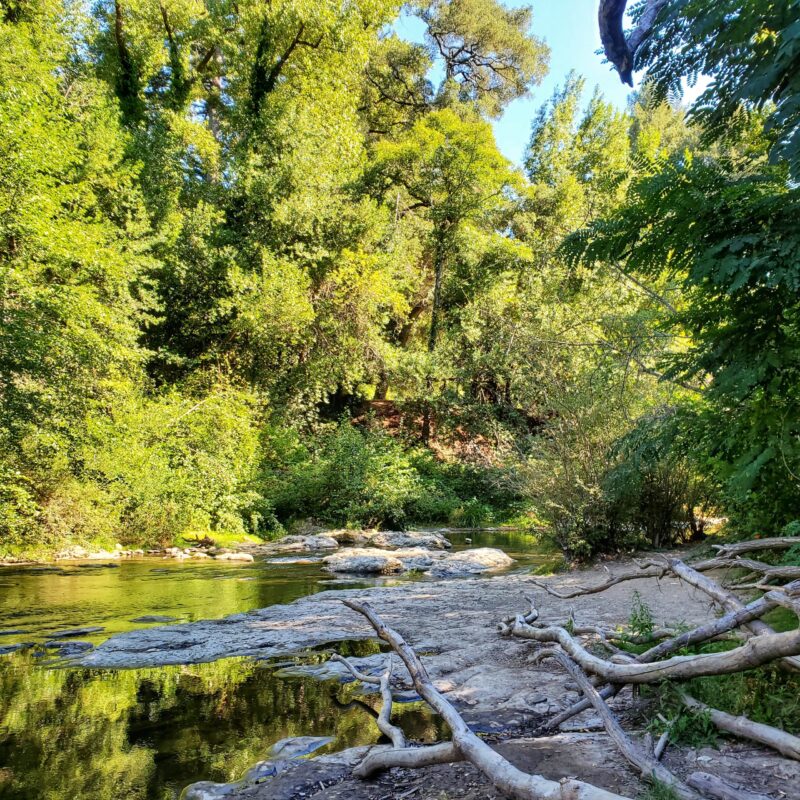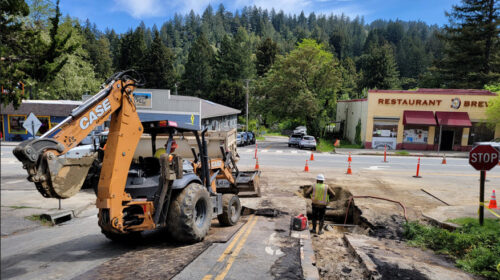A Perspective on the SLV Water District and the SLV
By Mark Dolson
When our family moved to Ben Lomond in 1995, I learned to write monthly checks to PG&E for energy and to San Lorenzo Valley Water District (SLVWD) for water. In the years ahead, I became painfully aware of PG&E and of how oblivious it is to its fundamental responsibilities to our community. SLVWD, though, flew under my radar for many years. When I had to vote for Board members for our local water district, I simply followed the lead of more knowledgeable friends. What I failed to appreciate was that, in contrast to PG&E, responsibility for SLVWD was vested directly in me.
Today, my perspective is dramatically different. I have become deeply interested in the challenges facing SLVWD and in the corresponding challenges and responsibilities facing all of us as the citizens ultimately in charge. Even though we’re busy living our own lives, our common welfare depends upon our ability to learn more about the realities of our local water supply and to wisely apply our understanding. My mission now is to help my fellow residents avoid my own past naivete and play a more well-informed role in our local governance.
There are three distinct arenas in which we need SLVWD to operate effectively. First and foremost, SLVWD needs to meet all the standard expectations of any water company: efficient and economical operations; reliable and attentive customer service; responsible management and financial oversight, with prudent long-term investment in infrastructure and adherence to water-specific legal constraints; and recruitment and retention of high-performing employees dedicated to its mission. In addition, SLVWD needs to be a good steward of the local watershed that we are all critically dependent on.
Responsibility for fulfilling these expectations lies in the hands of the District Manager and, ultimately, in the elected Board members who are responsible for hiring and overseeing the District Manager and for providing guidance on SLVWD policies and initiatives. With 35 employees on staff, numerous third-party contractors, and roughly 8000 paying customers, there are a lot of moving parts for everyone to stay on top of. In addition, though, there are various other challenges that SLVWD needs to cope with as they arise and evolve. These, in turn, bring us to the less obvious but no less important second and third operational arenas that SLVWD needs to perform well in.
Secondly, SLVWD needs to participate effectively in county-wide water resource management. The City of Santa Cruz, the City of Scotts Valley, and the San Lorenzo Valley obtain 100% of their water from local rainfall. SLVWD gets its water from a combination of local streams and pumping of groundwater. Scotts Valley relies exclusively on groundwater, and the City of Santa Cruz relies on the San Lorenzo River (including river water that it stores in the Loch Lomond Reservoir) and creeks on the west side of Ben Lomond Mountain. All three districts have excelled in their water conservation measures in recent decades, and local household water consumption is well below the state average.
Nevertheless, North County is under tremendous pressure to increase its supply of affordable housing (primarily in the cities of Santa Cruz and Scotts Valley) while simultaneously preserving groundwater levels and remaining resilient in the face of drought. This makes it essential for our separate water districts to work together to continue to improve our ability to fully utilize and responsibly share our limited water resources. These collaborative efforts are well underway, but aggressive SLVWD budget cutting in early 2019 and the related departure of SLVWD’s Environmental Project Manager have left our district at a disadvantage in terms of the staff resources that it can commit to this work. As a result, the collaboration has been challenging, with Santa Cruz and Scotts Valley pushing forward plans that appear to ignore or undermine SLVWD’s particular needs and the special burdens associated with recovering from the CZU Fire.
The third important arena for SLVWD to perform effectively is inherent in its status as a publicly governed water district. SLVWD’s ability to perform well is ultimately dependent on public understanding and support, and the two easiest aspects of SLVWD’s performance for the public to assess are water rates and water delivery.
Probably the clearest example of this can be found in the hidden complexities underlying recent increases in water rates. The bigger picture here is that water rates have been increasing dramatically across the state primarily because local water suppliers (SLVWD included) have kept rates artificially low for far too long by under-investing in essential (and expensive) infrastructure improvements. In addition, the state has established increasingly expensive oversight and planning requirements. Some of these are in support of stricter water quality standards, while others involve all manner of required studies, reports, and responses to various environmental and governmental concerns. The bottom line is that many of the drivers for increasing water rates are not within our local control (though note that SLVWD has responded to this by developing a Rate Assistance Program for those most in need).
In the past two years, SLVWD has been additionally confronted with (and has responded heroically to) unique challenges associated with extensive damage from the August 2020 CZU Fire. SLVWD is now facing (and will require community input on) major questions about how to rebuild its essential Cross-Country Pipeline for routing water from creeks on Ben Lomond Mountain to its water treatment plant. In addition, SLVWD is stepping forward as a good neighbor to help customers of three smaller water companies destroyed in the fire by beginning a consolidation process (while still taking care that the costs of these consolidations do not fall on the shoulders of current SLVWD ratepayers). In order for SLV citizens to meaningfully support or oppose SLVWD initiatives in the face of these various challenges, we all need a deeper understanding of the issues than we can glean from superficial social media discussions and/or campaign slogans.
In my personal judgment, the current SLVWD staff and Board are charting a responsible course through these sometimes-choppy waters. But they can continue to do so only if our entire community takes the time to understand and responsibly weigh in on the evolving issues that we need to collectively address.
Mark Dolson is a member of the local citizens’ group Friends of San Lorenzo Valley Water (FSLVW), but he is writing here as a private citizen. FSLVW articles, initiatives, and Board meeting summaries are available online at: friendsofsanlorenzovalleywater.org
Featured photo: San Lorenzo River Highlands Park in Ben Lomond
Photo by Mary Andersen




